Understanding the Dynamics of Noisy Pet Birds
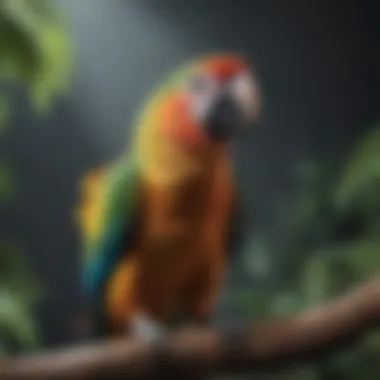
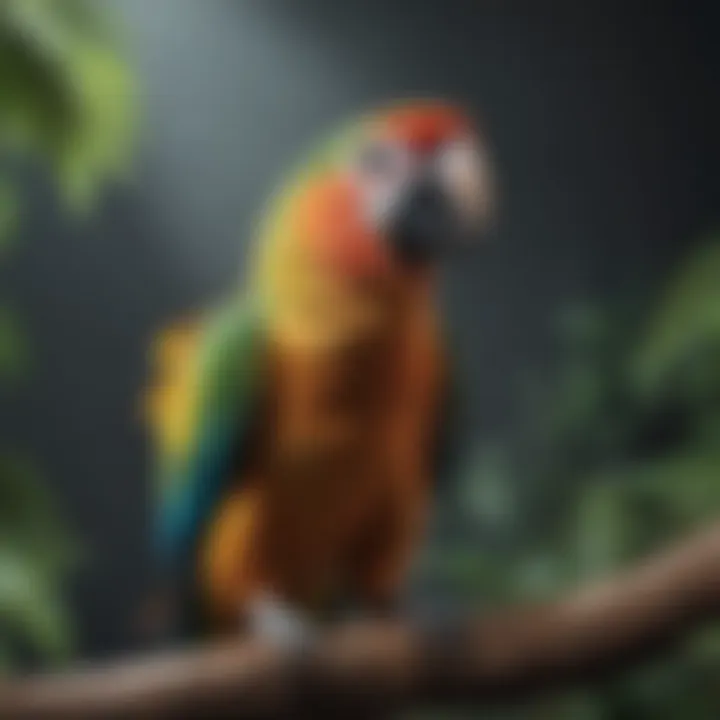
Intro
Noisy pet birds can be both a source of joy and a challenge for their owners. Understanding the reasons behind these vocalizations is crucial for fostering a harmonious relationship between birds and their caregivers. This article dives into the behavioral aspects of these avian companions, exploring the sounds they produce and the implications for their well-being and that of the household. By gaining insight into these dynamics, pet bird owners can navigate the complexities of bird ownership effectively.
Care Tips
Proper care for noisy pet birds is essential for their health and happiness. Implementing daily care routines can create a stable environment for these birds, reducing stress and minimizing noise levels.
Daily Care Routines
Establish a consistent schedule for feeding, playtime, and interaction. This predictability helps birds feel secure. Maintain a routine that includes:
- Morning feeding
- Midday play sessions
- Evening social interaction
Cage Setup and Maintenance
Ensure that the bird's cage is large enough to allow for movement and play. Include perches at different heights and various toys to stimulate their minds. Regularly check the cage for wear and tear, cleaning it at least once a week to prevent the build-up of waste and bacteria.
Hygiene and Cleaning Practices
Keeping the living space clean helps in reducing odors and enhancing overall health. Clean food dishes daily, and replace water frequently to prevent contamination. Use bird-safe cleaning products to maintain hygiene without exposing your pet to harmful chemicals.
Seasonal Care Adjustments
Birds may require different care depending on the season. In colder months, ensure they are kept warm with adequate bedding and avoidance of drafts. In summer, ensure they have access to fresh, cool water and shade during hot days.
Behavioral Insights
Understanding a bird's behavior is key to managing their noise. Their sounds often convey emotions or reactions to their environment.
Understanding Bird Body Language
Birds communicate not only through noise but also with body language. Signs of stress or comfort include tail position, feather ruffling, and head movements. Observing these cues can help owners respond appropriately to their needs.
Common Behavioral Issues and Solutions
Noise can stem from boredom or anxiety. Addressing behavioral issues may involve:
- Increasing stimulation with toys
- Engaging in more interaction to reduce loneliness
- Offering safe spaces to retreat when overwhelmed
Positive Reinforcement Techniques
Using positive reinforcement can encourage desirable behaviors. Rewarding quiet moments with treats or affection reinforces calmness. This method encourages a better understanding between owner and bird.
Social Interaction Needs
Birds are social creatures. They thrive on interaction, either with their owners or other birds. Providing opportunities for socializing can reduce excessive noise. Consider playdates with fellow bird owners or structured family time to deepen bonds.
Nutrition Guides
A balanced diet greatly impacts a bird's ability to thrive and may affect their vocal behavior too.
Essential Diet Components
Include a mix of seeds, pellets, fruits, and vegetables to meet dietary needs. Variety ensures that birds receive necessary nutrients, fostering overall health and reducing stress.
Safe and Toxic Foods
Be aware of what foods are harmful. Foods like chocolate, avocado, and onion can be detrimental to their health. Familiarize yourself with safe options to keep your pet healthy and happy.
Supplements and Treats
Occasionally offering supplements or specific treats can enhance their diet. This can include calcium supplements for bone health or fruits high in vitamin C for immune support.
Feeding Strategies for Different Species
Different bird species have varying dietary requirements. Research the specific needs of your bird species to avoid nutritional deficiencies or health problems.
Wellness and Health
Regular health checks are vital to your pet's lifespan and behavioral patterns.
Routine Health Checkups
Schedule veterinary checkups at least once a year. Make sure to find an avian veterinarian to better suit your bird's unique needs.
Identifying Symptoms of Illness
Be vigilant for signs of distress or illness, like changes in voice or behavior, feather loss, and changes in appetite. Quick identification can lead to better outcomes.
Preventative Care and Vaccinations
Ensure your bird is up-to-date on vaccinations to prevent diseases. Follow your vet's guidance for necessary preventive measures.
Mental and Emotional Well-being
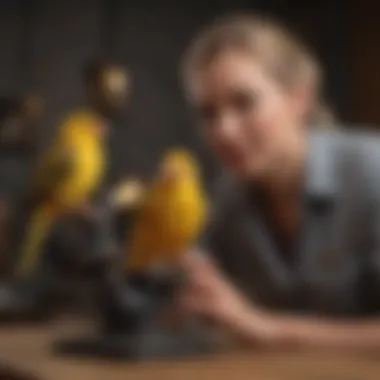

Mental stimulation is just as important as physical health. Provide toys and interaction to keep your bird engaged and emotionally healthy, which may also help reduce noisy behavior.
Enriching Activities
Engaging activities can significantly improve a bird's quality of life.
Toys and Playtime Ideas
Rotate toys regularly to prevent boredom. Simple toys made from natural materials can stimulate their curiosity and creativity.
Training and Tricks
Teaching birds tricks or commands not only enhances their cognitive abilities but also provides mental stimulation.
Outdoor Activities and Interaction
If possible, allow your bird to experience fresh air outside, but always ensure they are in a secure environment to prevent escape or harm.
DIY Projects for Mental Stimulation
Create DIY projects like foraging toys, which encourage exploration and problem-solving, keeping them entertained and engaged.
Understanding and addressing the needs of noisy pet birds is key to creating a peaceful home environment, where both the birds and their owners can thrive.
Preface to Noisy Pet Birds
Understanding the dynamics of pet birds, particularly their vocal behavior, is essential for any current or prospective bird owner. Birds are naturally vocal creatures, and their sounds play a crucial role in their social interactions, well-being, and communication. This article will analyze the importance of vocalizations made by these pets and address common misconceptions regarding their noise. Recognizing the significance of bird vocalizations can lead to a better quality of life for both the birds and their owners.
Significance of Vocalization
Vocalization among birds serves multiple purposes beyond mere sound production. Through chirps, whistles, squawks, and other sounds, birds communicate various emotions and intentions. For instance, a chirp might indicate happiness or curiosity, while squawking could signal distress or a need for attention. Pet birds also use vocalization for social interaction, establishing their place within the household dynamics.
Furthermore, understanding these vocal patterns can help owners respond appropriately to their pets' needs. Better communication can enhance the bond between the bird and its owner, reducing potential issues of stress and anxiety in the bird’s environment. Owners who grasp the meaning behind their pet's noises will have a much easier time providing for their emotional needs.
Common Misconceptions About Bird Noise
There are several misconceptions about the sounds pet birds make. One common belief is that all pet birds are excessively noisy, which is not true. Different species have varied vocal tendencies. For instance, while a Cockatoo might be quite loud, budgerigars are generally more subdued. Another misconception is that birds only make noise to get attention. In reality, they vocalize as a fundamental part of their behavior, not solely to demand interaction.
"Understanding the range of bird sounds and their meanings can create a harmonious environment for both birds and owners."
Additionally, many new bird owners might think that they can completely train their birds to be quiet. While some levels of noise can be managed, it is unrealistic to expect a pet bird to be silent. Embracing their natural vocal exuberance can lead to a more fulfilling bird ownership experience. By understanding these common misconceptions, owners can cultivate a more informed approach to living with their noisy companions, ultimately enhancing their shared life.
In summary, acknowledging the importance and variety of vocalizations in pet birds is crucial for their care and wellbeing. By unraveling misconceptions surrounding bird noise, bird owners can foster a more supportive and understanding environment.
Types of Noises Made by Pet Birds
Understanding the types of noises made by pet birds is essential not just for bird owners, but also for those considering bringing one of these creatures into their lives. Different sounds provide insights into their behaviors, emotions, and needs. By recognizing and interpreting these noises, owners can enhance their bond with their pet birds and create a more harmonious environment.
Chirps and Whistles
Chirps and whistles are generally the more pleasant and melodic sounds that pet birds often make. These vocalizations can indicate contentment and playfulness. A bird chirping cheerfully might be expressing happiness or a sense of security in its environment.
Chirping is more than just an aesthetic sound; it serves as a form of communication among birds. For instance, certain species, such as budgerigars, often use specific chirps to signal their presence or call to one another. Owners should pay attention to the patterns in chirping, as changes might indicate shifts in the bird's mood or health.
- Benefits of Chirping and Whistling:
- Promotes mental stimulation for both birds and owners
- Signals healthy emotional state
- Enhances social interaction within the household
Squawking and Screeching
In contrast, squawking and screeching present a different set of challenges. These loud and often jarring noises can stem from various sources, including frustration, impatience, or a desire for attention. A squawking bird can disrupt a household, leading to misunderstandings between birds and their owners about the reasons for such behavior.
It's important to recognize that squawking can also signal distress or discomfort. For example, if a bird feels threatened or is in an unfamiliar environment, it may resort to squawking as a survival instinct. Understanding the intent behind this noise is key for owners aiming to ensure their pet's wellbeing.
"Squawking may indicate a need for immediate interaction or a change in the bird's environment. Pay attention to these signals to foster better communication."
Mimicking Sounds
Mimicking sounds is a fascinating aspect of avian vocalization. Many pet birds, such as African Grey parrots and mynah birds, are well-known for their ability to replicate sounds they frequently hear. This includes human speech, household noises, and even other animal calls.
Mimicking serves not just as entertainment but also as a crucial element of social interaction. Birds that mimic human speech may be attempting to engage with their owners, expressing feelings of attachment. This behavior can enhance the bond between the bird and its human companions, emphasizing the importance of socialization in a pet bird's life.
- Considerations for Bird Owners:
- Encourage positive sounds and mimicry through interaction
- Provide a stimulating environment that fosters vocal development
- Monitor mimicking to understand emotional states
By understanding the types of noises made by pet birds, owners can better address their birds' needs and improve their overall relationship. Recognizing and interpreting these vocalizations is a crucial skill that not only benefits the birds but also enriches the experiences of their human companions.
Reasons for Noisy Behavior
Understanding the reasons for noisy behavior in pet birds is crucial for any bird owner. This section explores the specific elements that contribute to a bird's vocalizations, offering insights into how owners can better manage these sounds. Knowing why birds make noise can enhance the relationship between the owner and the bird, leading to a more harmonious living situation. This knowledge will allow owners to respond appropriately, minimizing stress for both parties.
Communication and Social Interaction
Birds are inherently social creatures that rely on vocalizations to communicate with their flock mates and humans alike. The sounds they produce often serve a distinct purpose, whether it be to attract attention, signal distress, or establish territory.


Key Points:
- Social Bonds: Vocalizations help birds form and maintain social bonds. Many pet birds will chatter or squawk to engage with their human companions or other birds in the household.
- Expressing Needs: Birds may use different sounds to express their needs or desires. For instance, a parakeet might chirp when hungry or seek interaction. Recognizing the sound patterns can aid in understanding the bird’s needs better.
A study on avian vocalizations found that the complexity of a bird's calls can indicate their emotional state or needs. Thus, a keen listener may respond more suitably to their pet's communication, enhancing the overall well-being of the bird.
Stress and Anxiety
Stress and anxiety can trigger excessive vocalization in birds. This may occur due to changes in their environment, such as moving to a new home or the introduction of new pets. Birds are sensitive to their surroundings, and any perceived threat can cause them to vocalize more than usual.
Contributing Factors:
- Environmental Changes: Changes in routine, such as a new work schedule for the owner, can lead to stress in pet birds.
- Isolation: Birds that spend too much time alone without interaction may become anxious, leading to increased noise levels.
Owners should monitor their birds’ behavior. If a bird's vocalization patterns shift unexpectedly, it might be time to evaluate their environment and provide reassurance or enrichment activities.
Mating Calls and Seasonal Changes
Many bird species exhibit specific vocalizations during mating season, which can lead to increased noise levels in the home. This behavior is driven by natural instincts and hormonal changes as birds seek to attract a mate.
Observations:
- Seasonal Breeding: In many cases, pet birds become more vocal as they enter their breeding season, which may vary depending on the species.
- Mimicking Attempts: Owners may notice their birds attempting to mimic sounds that they associate with attracting mates, further impacting the overall noise environment.
By understanding these dynamics, owners can better prepare for seasonal changes in their birds' behavior.
"Owning a pet bird requires awareness not just of their sounds but of the emotions and needs that those sounds represent."
Being informed will empower pet owners to establish a nurturing environment.
Challenges Associated with Noisy Birds
Pet birds are known for their lively nature and vocal cords that simply cannot be silenced. While their sounds are often endearing, they can create distinct challenges for both the birds and their owners. Understanding these challenges is key for any potential bird owner or enthusiast. It isn’t just about tolerating noise; rather, it encompasses considerations of household dynamics, relationships with neighbors, and awareness of local noise ordinances. Addressing these issues can help forge a better living environment for all involved.
Impact on Household Environment
Noise levels from pet birds can greatly influence the household environment. Frequent loud sounds may disrupt daily activities, such as work or relaxation. Birds like cockatoos and macaws can produce sounds that resonate beyond the walls of their cage. This could lead to stress for both the owner and the bird. Also, a loud bird may deter guests from visiting or make family members feel uncomfortable in their own space. To maintain a harmonious household, owners need to set boundaries around their birds’ vocalization. Strategies may include designating specific times for quiet or using soundproof materials in rooms where the bird is kept.
Neighborhood Relations
The relationship with neighbors can be significantly affected by a noisy bird. While some neighbors may love the sounds of tropical birds chirping, others might find it bothersome. Regular loud vocalizations can result in complaints, and in extreme cases, this can lead to strained relations or even confrontations. It’s essential for bird owners to be mindful of their surroundings. Consideration should be shown through effective noise management strategies. Regular communication with neighbors can also help. If a bird is known to be loud during certain times, informing neighbors can create understanding, enhancing community relations.
Legal Restrictions on Noise Levels
In some areas, noise levels from pet birds may be regulated under local laws. Some communities have specific ordinances that restrict noise during particular hours. Understanding these laws is crucial for any bird owner. Violating noise regulations can lead to fines or, in severe cases, eviction from rental properties. Owners should consult local regulations to know the limitations in their area. Awareness of these laws can guide owners in their bird management practices.
Keeping pets is a mutual commitment not only between the owner and the pet but also with the community around them.
Managing the noise levels from pet birds is essential to maintain a tranquil household environment, good neighborly relations, and compliance with legal frameworks. With understanding and preparation, owners can significantly enhance their living experience with noisy birds.
Managing Noise Levels in the Home
Managing noise levels in the home is a critical aspect of living with noisy pet birds. High noise levels can create stress for both the birds and their owners. Understanding how to control and minimize excessive noise contributes to a more harmonious living environment. This section will explore various practical strategies and considerations that can significantly enhance communication between you and your feathered companion as well as reduce disturbance in your household.
Understanding Your Bird's Patterns
To effectively manage noise, it is essential to know your bird's specific vocal patterns. Each species has unique sounds that reflect their emotions and needs. Observing these patterns helps you identify times when your bird is likely to vocalize more.
For instance, some birds might be more vocal during the early morning or sunset, which is when they are more active. Keeping a record of these times can provide insight into their behavioral rhythms.
Here are a few steps to understand your bird's vocal patterns:
- Watch for triggers: Note what activities provoke vocalizations. Is it playtime, meal times, or perhaps the presence of visitors?
- Assess moods: Birds often make noise when they are happy, bored, or seeking attention. Understanding these triggers can guide you in managing the noise better.
Creating a Calm Environment
A calm living space can lead to quiter birds. Stress and agitation can amplify vocal behavior. Therefore, establishing an environment that promotes relaxation is vital for both the birds and their owners.
Here are some strategies to consider:
- Minimize loud noises: Reduce sounds from televisions, loud music, or conversations when you expect your bird to be calm.
- Comfortable cage setting: Ensure your bird's cage is situated in a quiet corner of your home, away from traffic or loud disturbances.
- Regular routine: Birds thrive on routine. A consistent schedule for feeding and social interaction reduces anxiety and excessive vocalization.
Positive Reinforcement Techniques
Implementing positive reinforcement strategies can change your bird's vocal tendencies. Encouraging quiet behavior through rewarding positive actions can foster better habits.
- Rewards for quietness: Provide treats or praise when your bird remains quiet during specific times, like during your work hours or while watching a movie.
- Redirecting attention: When your bird starts to vocalize excessively, offer engaging toys or puzzles to shift their focus. This helps to break the cycle of noisy behavior.
- Consistency is key: For the techniques to be effective, ensure they are consistently applied. This consistent feedback will help your bird understand what behaviors are rewarded.
In summary, managing noise levels in your home requires a thoughtful approach, addressing both your bird's vocal patterns and your living environment. Creating calm and using positive reinforcement can lead to quieter and happier birds.
By understanding these dynamics, you can pave the way for a more peaceful coexistence.
Enhancing Communication with Noisy Birds
Effective communication between pet birds and their owners is essential. It can greatly influence the well-being of both parties. Birds are social creatures. They rely on vocalizations and body language to express their needs and emotions. Understanding these signals can lead to a better living situation. It increases the bond between the owner and the bird. Recognizing what your bird is trying to communicate helps in addressing its needs. This can decrease frustration and improve the quality of life for both.
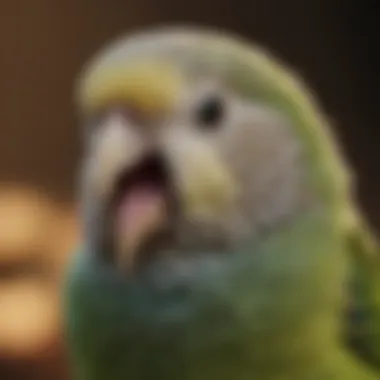
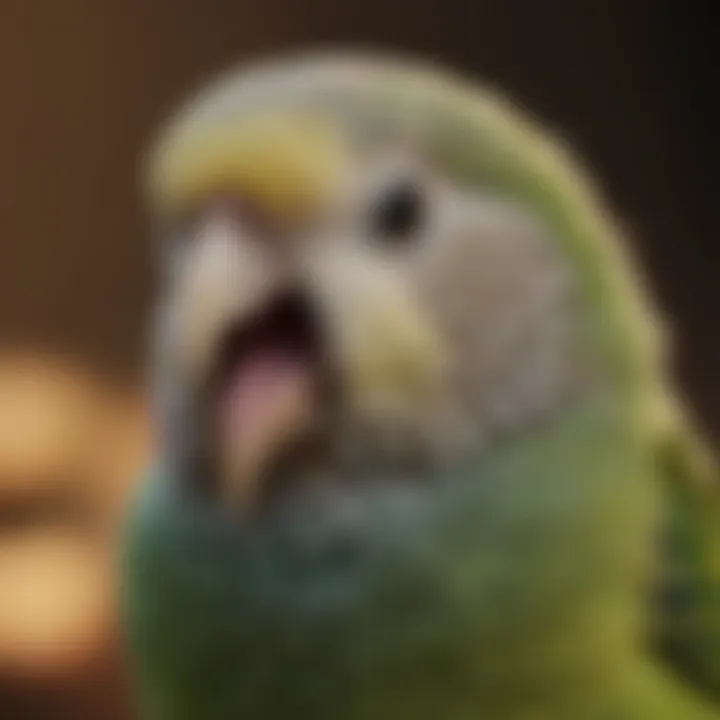
Recognizing Vocal Cues
Each bird species has its own set of vocalizations. Parrots, for example, may chirp, squawk, or yell depending on their mood. Recognizing these vocal cues can provide insight into what the bird is feeling. Here are some common vocal cues and their meanings:
- Chirping: Often indicates contentment or excitement. This can happen during playtime or flock interactions.
- Squawking: Usually signals a need for attention. It can be a form of protest if ignored.
- Screeching: May suggest distress or discomfort. Pay attention to surrounding factors to identify the trigger.
Familiarizing yourself with these sounds is essential. It will enable you to respond promptly to your bird's emotional state.
Interpreting Body Language
Birds also communicate through body language. Understanding these non-verbal cues adds depth to the owner's ability to connect with their pet. Some important body language signals include:
- Fluffed feathers: May indicate the bird is cold or relaxed.
- Aggressive stance: Wings slightly spread, and a raised head indicates a warning.
- Head tilting: Often a sign of curiosity. A bird engaging in this behavior is usually eager to learn or discover.
Paying attention to these signals can provide insight into their needs and emotions.
"Understanding your bird's body language and vocal cues enables a more harmonious home environment."
Being mindful of these cues can lead to positive interactions. A deeper understanding of your pet's language fosters a strong bond, ultimately creating a better living experience for both the bird and owner.
Choosing the Right Bird for Your Lifestyle
Selecting a pet bird requires careful consideration of its vocalization habits and how these will integrate with your daily life. Birds are social creatures, and their noises are part of their natural behavior. Understanding the dynamics of these sounds can lead to a more harmonious relationship between pet owners and their feathered companions. This section focuses on crucial elements that prospective bird owners should evaluate before making a commitment.
Assessing Noise Tolerance Before Adoption
Before adopting a bird, it is vital to assess your personal tolerance to noise. Some birds are naturally quieter, while others can be quite loud. An understanding of your living environment will inform this decision. Consider questions like:
- Do you live in an apartment or a house?
- Are there any noise restrictions in your building?
- How does your family or household respond to loud sounds?
- Do you have children or other pets?
These factors play an important role in whether a noisy bird will be a suitable addition to your home. Those with a low threshold for noise may prefer quieter species, such as finches or canaries.
In contrast, if you thrive in a vibrant auditory environment, species like macaws or cockatoos might suit you, given their vocalizing tendencies. It is also wise to visit local shelters or breeders to experience these vocal interactions firsthand. Sometimes, seeing and hearing the birds can greatly influence your final decision.
Different Breeds and Their Noise Levels
Bird species vary significantly in their noise levels and types of vocalizations. Understanding the traits of specific breeds can guide your selection.
Birds commonly adopted as pets include:
- Budgerigar (Budgie): These birds are known for their chirpy, friendly nature. They can mimic words and sounds but are generally not overly loud.
- Cockatiel: Cockatiels enjoy whistling and can be quite chatty at times, but they do not generally reach the noise levels of larger parrots.
- Amazon Parrots: Known for their sociable behavior, these parrots are often louder and can create a range of sounds and phrases.
- Macaws: Famous for their captivating colors, macaws can be extremely vocal, often producing loud screeches that can be disruptive.
"Choosing the right bird can immensely affect your harmony at home. Take time to research and reflect on what fits your lifestyle best."
Ultimately, there is a bird out there that suits every individual. Researching your options and understanding the specific noise patterns and characteristics of each breed will ensure you make a well-informed decision.
Taking these considerations seriously is crucial for achieving a successful and enjoyable bird ownership experience.
Long-term Solutions for Noise Management
Managing the noise levels of pet birds is crucial for fostering a harmonious living environment. Owners often underestimate the long-term benefits of implementing effective noise management strategies. Such approaches not only enhance the overall well-being of the bird but also improve the relationship between the bird and its owner. Sustainable solutions can help in reducing stress for both parties while preserving the bird's natural behaviors. Understanding these management techniques empowers owners to create a better living situation for their feathered companions.
Behavioral Modification Training
Behavioral modification training serves as a pivotal strategy in managing noise levels among pet birds. This method involves the systematic reinforcement of desirable behaviors while discouraging unwanted vocalizations. Trainers typically employ positive reinforcement techniques, rewarding the bird for quieter behavior with treats or praise. This approach creates a more conducive environment for the pet while also fostering a bond between the owner and the bird.
Training sessions should be consistent, as regularity helps reinforce learning. Short, engaging sessions tend to be more effective than longer, monotonous ones. In addition, understanding the specific noise triggers for each bird is integral to tailoring the training. For instance, some birds may vocalize more during specific times of day or in response to environmental stimuli.
"Consistency and patience are key in modifying a bird's behavior effectively."
Environmental Enrichment Strategies
Another important aspect of noise management involves environmental enrichment strategies. Sufficient mental and physical stimulation can greatly reduce excessive vocalizations. Birds are inherently social and intelligent creatures, requiring engagement to keep them happy and healthy. Owners should provide various activities that cater to their bird's natural instincts. These activities include toys, puzzles, and social interaction with their owners.
Establishing a routine can further enhance environmental stimulation. Birds thrive on predictability, so incorporating playtime and exploration into their daily schedule can divert their attention from excessive squawking or screeching. Additionally, rotating toys and introducing novel items periodically can stimulate curiosity and keep boredom at bay.
Owners should also consider creating spaces where the birds can feel safe and secure. Providing areas with various perches and hiding spots can enable birds to explore and feel more at ease. An enriched environment promotes healthy behaviors and helps in mitigating noisy tendencies, resulting in a more balanced relationship between birds and their owners.
Culmination
The conclusion serves as a critical component in articulating the overall significance of living with noisy pet birds. This segment synthesizes the multi-faceted dynamics of avian vocalization, bringing together the core themes discussed throughout the article. It emphasizes the dual perspective of both the birds and their owners. Understanding noisy behavior is not merely an academic exercise; it deeply informs the day-to-day interactions between pet birds and their humans.
Reflecting on the journey of pet ownership, one recognizes that the sounds emitted by birds are integral to their identity. The way birds communicate speaks volumes about their well-being, social needs, and emotional states. As much as owners might desire a quieter environment, the noises are often a window into the birds' experiences and feelings.
For pet owners, recognizing the role of sounds in their birds' lives can foster empathy. The right approach to these vocalizations creates a more harmonious home. This includes understanding the reasons behind specific sounds and acting effectively to address any underlying issues. Further, implementing behavior modification techniques can have enduring benefits for both birds and owners. Thus, the practical insights provided should equip readers to enhance the quality of life for all parties involved.
Overall, the conclusion highlights that while managing noise can be challenging, it is feasible with informed strategies. The relationship is a two-way street, and adapting to each other's needs can result in a fulfilling companionship.
Reflections on Living with Noisy Birds
Living with noisy birds presents both challenges and rewards. Each sound carries meaning, and taking the time to interpret those meanings can deepen the bond between bird and owner. The experience provides opportunities for learning and growth. As owners, there might be moments of frustration, yet the joy of witnessing vibrant communication and expression is unparalleled.
Managing expectations is crucial. One must understand that noise levels can vary, and patience is often necessary. It is common to experience daily rhythms of sound, particularly during mornings or evenings when birds are most active. Acknowledge these patterns and integrate them into your life. For some, these sounds are part of a lively atmosphere, enriching daily routines.
Additionally, regular engagement with your pet bird can lead to reduced noise related to anxiety or boredom. Active interaction, whether through play or training, often results in quieter periods as birds feel more secure and invested in their environment.
Future Considerations for Bird Owners
With evolving lifestyles and communities, future bird owners must consider several factors when managing noise. First, potential adopters should assess their living situations. This includes evaluating noise restrictions in residences and neighbor expectations. It's advisable to consult local regulations to avoid conflicts.
Consider also the types of birds suited to specific environments. Research various species and their typical noise levels. Certain birds, like African Grey parrots, are known for their vocal ability, while others may be more moderately vocal.
Moreover, advancements in training techniques should be explored. Staying informed about effective behavioral strategies can ensure a peaceful cohabitation. Online platforms such as reddit.com and pet bird communities can provide valuable insights and shared experiences. Owners are encouraged to share strategies and challenges with like-minded individuals.















